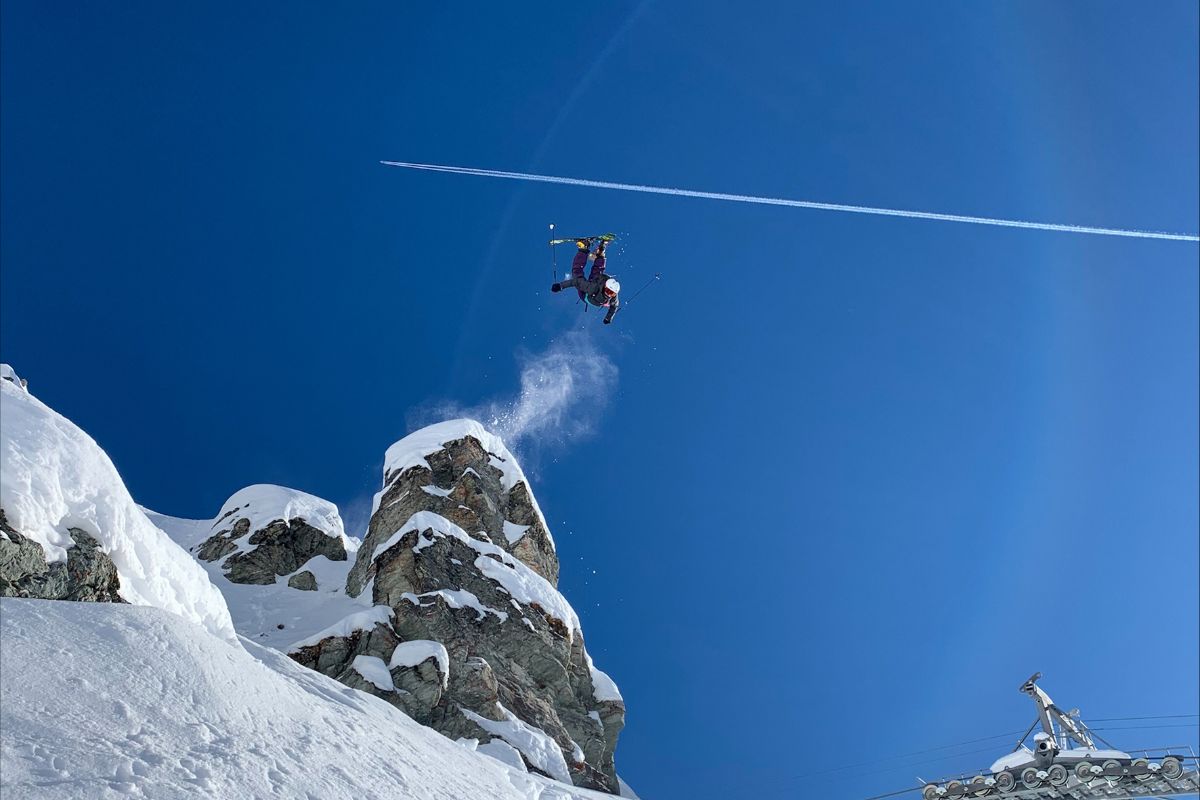Ski Chatter: Jordan Ray


What does it take to claim a space on the Freeride World Tour?
19-year-old Jordan Ray seems to be on the right track. Winner of the Freeride Junior Tour 2023 and a rising star in the freeride world, he could become the first British skier to gain a spot at the top. Born to British parents, Jordan was raised in the Swiss mountain town of Villars, where straight-lining steep mountain faces is just another day in his backyard. Here, he shares his story, his best days, and setbacks in his relentless pursuit of a place on the Freeride World Tour.
Support our sponsors—give them a click!
Amy Marwick (AM): How did you get into freeride skiing?
Jordan Ray (JR): It was always what I wanted to do. I did a lot of racing when I started, which was fun, but I found it restrictive. At 13, I joined the regional freestyle team, spent three seasons in Austria with “Why Ain’t You Jibbin’?” and later trained with the Mountain Line Foundation in Verbier.
AM: What is the Mountain Line Foundation?
JR: It was founded by Géraldine Fasnacht, a pro snowboarder and adrenaline-seeker. She mentors a small group, offering both physical and mental coaching. This winter, we’re training with Emilien Badoux, a pro snowboarder, which provides a lot of mountain insight.
AM: How did you balance school?
JR: It was tough. I’m dyslexic and attended local schools in Villars until 14, then switched to online home schooling in Austria with a team setup.
AM: Winning the Freeride Junior Tour was impressive. What did you learn?
JR: It gave me confidence in performing consistently over a season, not just in a single event, which will help in the Qualifiers.
AM: Any memorable moments or challenges?
JR: Skiing with my mates in Verbier was unforgettable. Early last season was tough with falls in the first competitions, but Géraldine helped me mentally, which made a huge difference.
AM: How?
JR: I tried to compete casually, as if skiing with friends, but realized I perform better when I’m a bit tense and nervous.
AM: Do you like that feeling?
JR: Not necessarily, but it works. Visualizing my line the night before helps. It’s overwhelming at the top, but once I start, focus kicks in, and it feels good.
AM: What’s your competition strategy?
JR: I look for an inspiring feature to build the run around it as fluidly as possible.
AM: Strong aspects of your skiing?
JR: It depends on the competition. If there aren’t many features, I focus on speed. Bigger features let me incorporate tricks.
AM: Athletes who inspire you?
JR: Candide Thovex – I try to incorporate his style, though he’s inimitable.
AM: You had an injury in New Zealand. What happened?
JR: Four days before the first Qualifier, I misjudged a double drop. I thought it was a pulled muscle, but my hamstring had torn from my pelvis. Thankfully, the bone detached, sparing the muscle.
AM: Is that season-ending?
JR: Yes, though the timeline’s uncertain. I’m focusing on recovery and aim to start skiing by February.
AM: Do points carry over to adult competitions?
JR: Yes, I’ll start with 3- or 4-star events, aiming for a spot in the Freeride World Tour by 2026.
AM: Any advice for young skiers?
JR: Junior comps are a great entry point with an encouraging atmosphere and clubs that teach mountain safety.
AM: Lessons learned?
JR: Knowing when to call it a day. My injury happened at the day’s end when I was tired – it’s important not to push too hard and save it for another day.